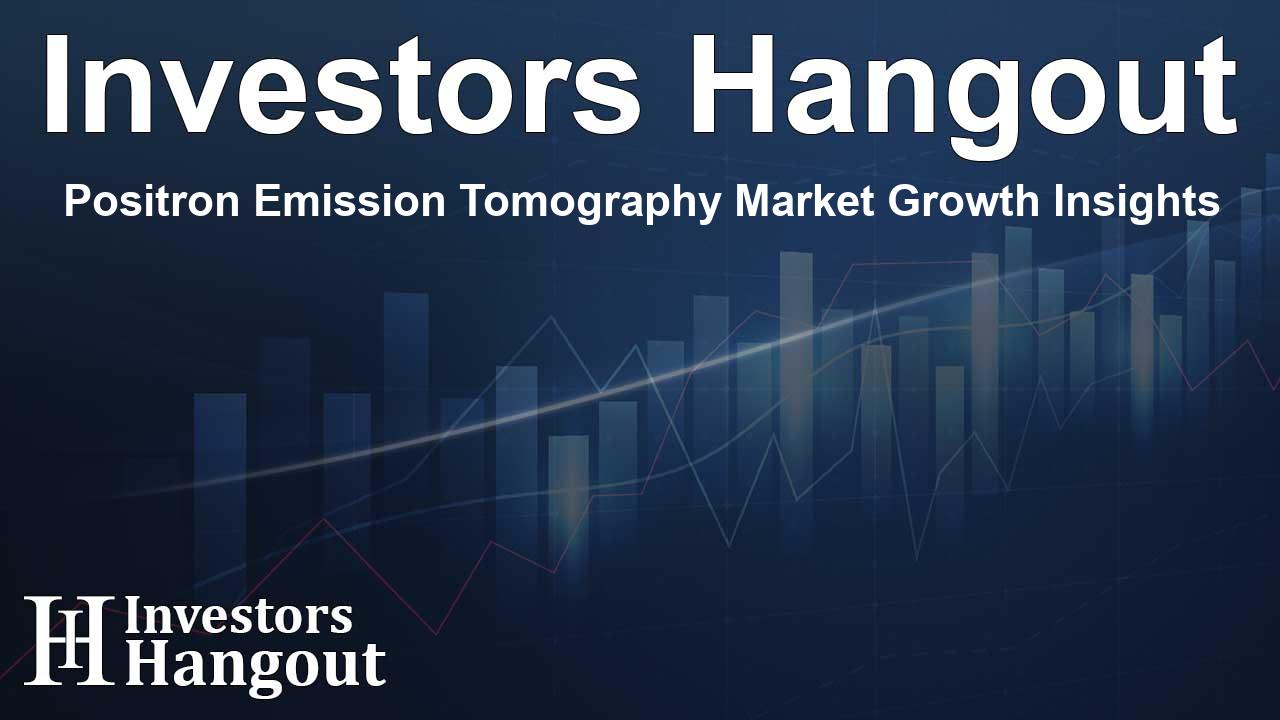Positron Emission Tomography Market Growth Insights

Understanding the Positron Emission Tomography Market Dynamics
The Positron Emission Tomography (PET) market is experiencing impressive growth, projected to rise from USD 2.63 billion to USD 4.69 billion within the forecasted timeframe. This upward trajectory reflects a compound annual growth rate (CAGR) of 6.65% from 2024 to 2032. The driving forces behind this growth are numerous, including the increasing prevalence of chronic diseases, heightened demand for accurate early diagnostics, and ongoing technological advancements in imaging systems.
Innovative Imaging Technology in Healthcare
PET stands out as a highly advanced imaging technology that provides critical insights into metabolic processes within the body. It plays a vital role in the early detection and treatment of conditions such as cancer, cardiovascular diseases, and various neurological disorders. The introduction of hybrid imaging systems, specifically PET combined with CT and MRI, has substantially enhanced the quality of diagnostics, which is beneficial for patient outcomes. This combination enables practitioners to view both functional and anatomical images, offering comprehensive insights essential for effective treatment planning.
Key Market Players and Their Contributions
Several prominent players are making remarkable contributions to the Positron Emission Tomography market. Established companies such as GE Healthcare and Siemens Healthineers, alongside Koninklijke Philips N.V. and Canon Inc., are leading the way with their innovative PET/CT systems. These advanced systems provide essential high-resolution imaging capabilities that significantly improve diagnostic accuracy, particularly in oncology.
Spotlight on PET Applications and Market Segmentation
The primary market segment for PET involves its application in oncology, accounting for a substantial share of 57.4%. The capability of PET to deliver high-resolution metabolic imaging is invaluable for early-stage cancer diagnosis and ongoing treatment evaluation. Furthermore, the increasing adoption of PET in neurological assessments, driven by conditions such as Alzheimer's and Parkinson's, signifies its pivotal role in modern imaging techniques.
Emerging Trends and Technologies
Several trends are shaping the current landscape of the PET market. The integration of advanced technologies in hybrid imaging systems, like PET/CT and PET/MRI, is significantly boosting diagnostic precision. These innovative systems not only enhance the clarity of the images produced but also reduce the radiation exposure to patients, making them favorable options in clinics.
Expanding Regional Reach of PET Technology
In 2023, North America held a dominant position within the PET market, attributed to its remarkable healthcare infrastructure and consistent advancement in imaging technology. This growth is complemented by increasing demand for oncological diagnoses and a rise in chronic disease incidences. Meanwhile, the Asia Pacific region is poised for a faster growth rate, driven by rising healthcare expenditures, an aging demographic, and escalating cancer rates. Nations like China are emerging as leaders in enhancing their PET technology access and production capabilities.
Challenges and Opportunities Ahead
Despite the vigorous growth expected in the PET market, potential challenges, such as regulatory obstacles and high imaging device costs, could hinder expansion. However, the commitment to research and the development of cost-effective solutions indicate a bright future for the industry. Companies are increasingly investing in PET tracer manufacturing to improve accessibility and meet the growing demand for advanced imaging solutions.
Recent Developments in the Market
Continuous advancements mark the progress of PET technologies. Noteworthy developments include the initiation of new clinical trials aimed at evaluating novel PET tracers and improvements in diagnostic imaging products. For instance, new FDA-approved diagnostic tools are set to enhance cardiac imaging, providing healthcare professionals with better diagnostic options for patients at risk of coronary artery disease.
Frequently Asked Questions
What is the projected growth rate of the PET market?
The Positron Emission Tomography market is expected to grow at a CAGR of 6.65% from 2024 to 2032.
What are the primary applications of PET technology?
PET technology is primarily used for oncology, neurological assessments, and cardiovascular diagnostics.
Who are the key players in the Positron Emission Tomography market?
Key players include GE Healthcare, Siemens Healthineers, Koninklijke Philips N.V., and Canon Inc.
Which region currently leads the PET market?
North America leads the Positron Emission Tomography market due to its advanced healthcare system.
What challenges does the PET market face?
Challenges include regulatory hurdles and the high costs associated with advanced imaging devices.
About The Author
Contact Ryan Hughes privately here. Or send an email with ATTN: Ryan Hughes as the subject to contact@investorshangout.com.
About Investors Hangout
Investors Hangout is a leading online stock forum for financial discussion and learning, offering a wide range of free tools and resources. It draws in traders of all levels, who exchange market knowledge, investigate trading tactics, and keep an eye on industry developments in real time. Featuring financial articles, stock message boards, quotes, charts, company profiles, and live news updates. Through cooperative learning and a wealth of informational resources, it helps users from novices creating their first portfolios to experts honing their techniques. Join Investors Hangout today: https://investorshangout.com/
The content of this article is based on factual, publicly available information and does not represent legal, financial, or investment advice. Investors Hangout does not offer financial advice, and the author is not a licensed financial advisor. Consult a qualified advisor before making any financial or investment decisions based on this article. This article should not be considered advice to purchase, sell, or hold any securities or other investments. If any of the material provided here is inaccurate, please contact us for corrections.
